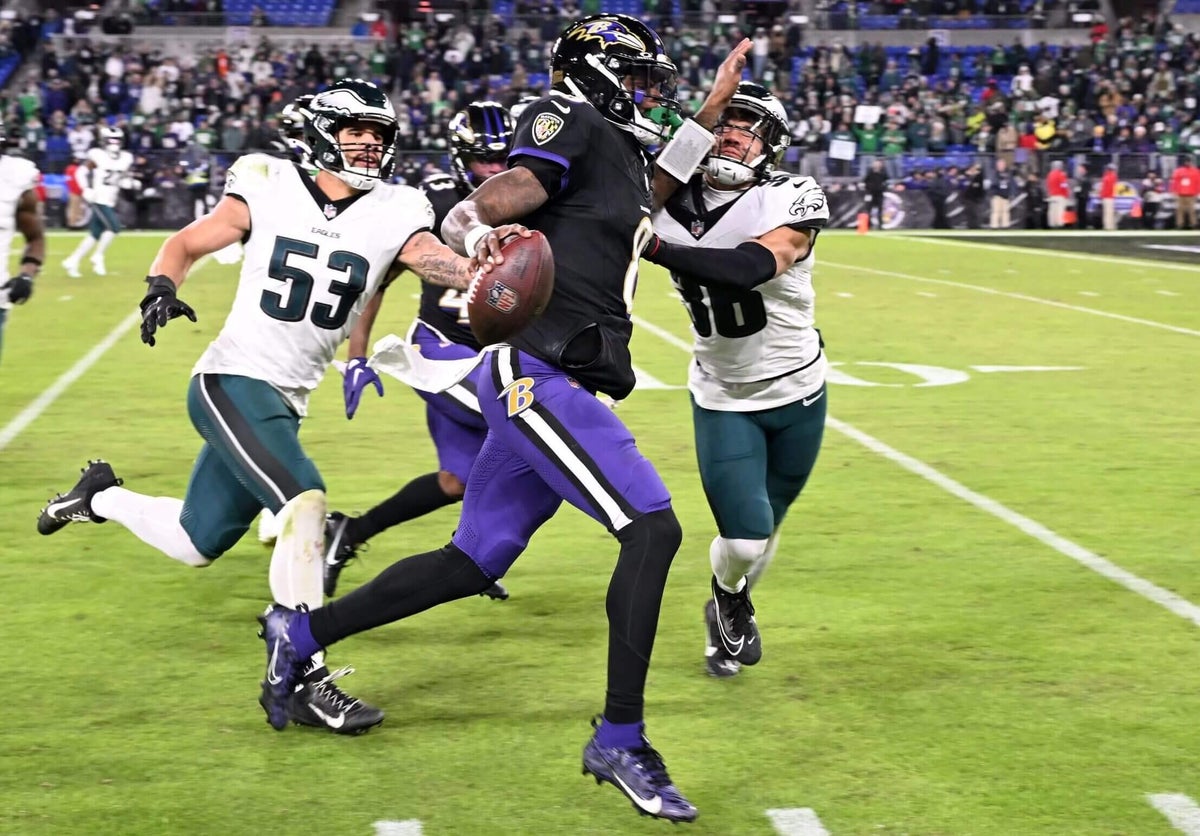World Champion Tadej Pogacar soloed to a decisive victory at Liege-Bastogne-Liege on Sunday, continuing a season in which the 26-year-old Slovenian has dominated the sport.
Italian rider Giulio Ciccone outsprinted Irishman Ben Healy to finish second, while home favourite and two-time winner Remco Evenepoel failed to compete with Pogacar in front of the Belgian crowds.
In the women’s race, Kim Le Court became the first ever Mauritian to win a Monument, timing her sprint perfectly to overcome a high-class lead group that included Dutch pair Demi Vollering and Puck Pieterse.
Jacob Whitehead dissects the key moments of the day.
Introducing La Doyenne
First run in 1892, Liege-Bastogne-Liege is the most venerable of cycling’s five Monuments, its history betrothing it with the moniker of La Doyenne — roughly translated as the Old Lady. Closely following the Amstel Gold race and Fleche Wallonne, the trio are collectively known as the Ardennes Classics, with Liege-Bastogne-Liege its jewel.
The 260km route passes through the short, sharp hills of southern Belgium (French-speaking Wallonia) towards Bastogne on the Luxembourg border — a location initially chosen so 19th-century race organisers could hop on a train to staff a midway checkpoint.
A succession of climbs intensifies in frequency — five categorised in the final 50km — as the riders return on a far more winding loop towards Liege. Known popularly as an elimination race, in the three previous editions, the eventual winner had separated themselves from the peloton with around 30km to go.
“Liege is a race that creeps up on you,” former winner Simon Gerrans once said. “It gets tougher and tougher as the day goes on.”
The women’s race begins in Bastogne before matching the majority of the men’s route for 153km back to Liege.

Where the men’s race was won
Liege-Bastogne-Liege has a reputation for being played out amid the changeable Wallonian weather, but the bright sunshine of Sunday’s edition brought the feeling of high summer instead.
With the average pace as high as the mercury, the day’s breakaway never seriously threatened. Though INEOS attempted a move with Bob Jungels and Tobias Foss midway through the race, the peloton was together until 35km remaining.
It was there, at the base of Cote de La Redoute, the race’s most famous climb, that Pogacar attacked. He quickly opened a gap without leaving his saddle, holding a 10-second lead over the top of the 1.6km climb.
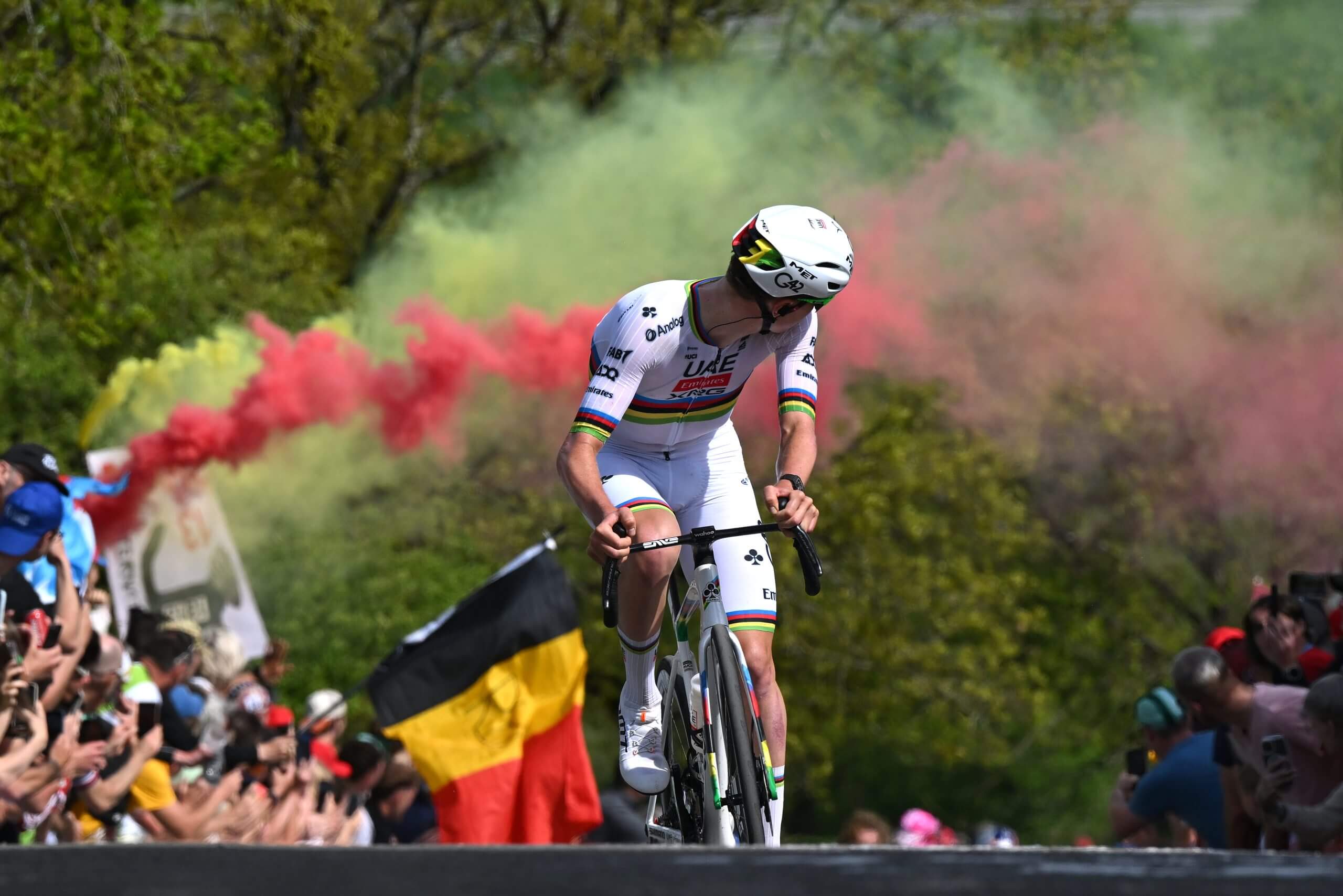
“Actually, there was not a plan,” Pogacar said at the finish line. “But there was a hard pace before that, I saw that a number of teams don’t have a lot of team-mates anymore, and so I said: ‘OK, I’ll test my legs and see if I can get a gap at the top’.”
Behind, a chase group formed of Q36.5’s Tom Pidcock, Tudor Cycling’s Julian Alaphilippe, EF Education First’s Ben Healy, and Lidl-Trek’s Giulio Ciccone. Evenepoel was stuck in a fourth group after positioning himself poorly on La Redoute.
All four chasers, as punchy climbers with good sprints, would have fancied their chances of overall victory had they bridged to Pogacar, but the gap continued to grow. It was over one minute with 20km remaining, before the chase group splintered entirely, Alaphillippe in particular paying for his early efforts.
Pogacar’s victory was never seriously in doubt.
Ciccone outsprinted Healy for second place, 1.03 behind Pogacar, with the pair managing to hold off a quickly closing larger chase group.
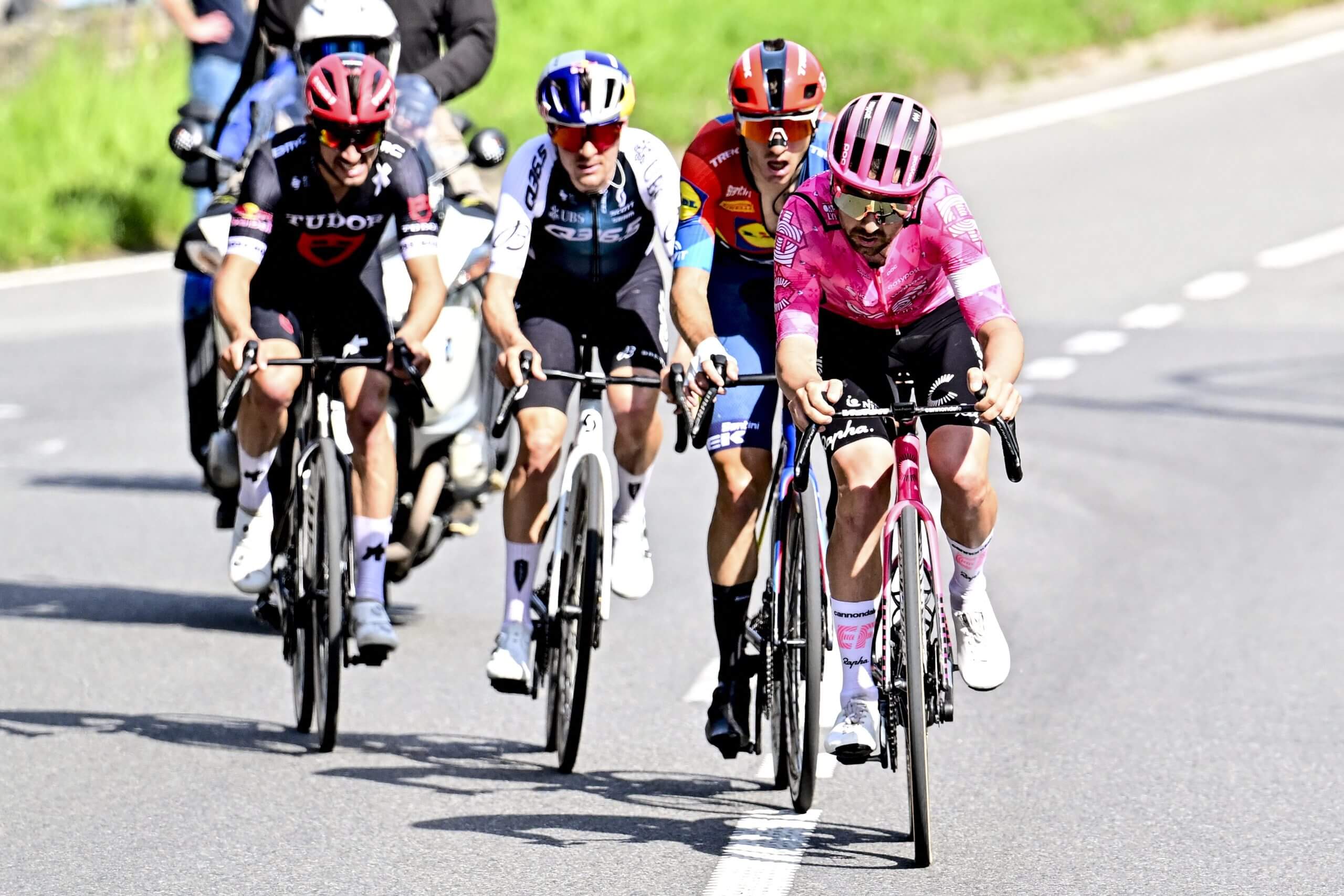
Pogacar perfect again. What does that mean for cycling?
What is there left to write about Pogacar? In winning Liege-Bastogne-Liege, he became the first man in the sport’s history to finish on the podium of six Monuments in a row.
The Ardennes Classics are meant to be the point in the season where climbers overtake powerhouses as the favourites, but the 26-year-old has been dominant for two months. He has won one Monument (the Ronde van Vlaanderen), finished on the podium in two others (Milan-San Remo and Paris-Roubaix) and won two other high-profile events (Strade Bianche and Fleche Wallonne).
Any sign that his increased mastery of the cobbles has affected his climbing? Not a bit of it. On Wednesday, Pogacar celebrated the return of the season more suited to his skill set with a demolition of his rivals at Fleche Wallonne, blowing open the race with an unprecedented early attack from the base of the Mur de Huy.
Sunday’s victory means he has become the first rider since 2017 to do the Fleche-LBL double, and just the third, after Eddy Merckx and Ferdi Kubler, to do the double while wearing the world champion’s rainbow jersey.
“I wish Pogacar would just take a bit of a break and give us all a chance,” INEOS Grenadiers’ Geraint Thomas had joked pre-race, himself a former Tour de France winner riding his final Liege-Bastogne-Liege.
Merckx was the last rider to enjoy this type of dominance across both the Monuments and Grand Tours. The only thing that stopped him from winning five straight editions of Liege-Bastogne-Liege was when the De Vlaeminck brothers reportedly blocked him in the closing kilometres in the 1970 race.
Pre-race, the mood among the peloton was that a similar manoeuvre might be their only chance of stopping Pogacar.
But after all, it was only two years ago that Pogacar lay on the floor, his wrist fractured, after crashing in this race with just 80km of it ridden. The injury ruined his preparation for the 2023 Tour de France, where he would go on to lose comprehensively to Danish rider Jonas Vingegaard.
He came back to win in Liege last year, but this victory was arguably even more dominant. The ease of his decisive attack, remaining in the saddle and putting one minute into his chasers at will, underscores the reality facing cycling.
As it stands, just two riders are able to regularly challenge Pogacar: on the flat, Mathieu van der Poel, and in the mountains, Vingegaard. At top form, Evenepoel could potentially join them.
Between them, they continue to hoover up the sport’s honours, with Pogacar its most commanding force. Historically, one of the sport’s greatest assets has been the variety of its champions — now, the flowers invariably fall at the feet of one unassuming Slovenian.
Dominance can be exasperating, but Pogacar’s style is currently holding that at bay. He rides with the freedom of an athlete who wins because he is utterly unafraid to lose. On the rare occasion that he is caught and beaten — as he was at Amstel Gold last weekend — he shrugs and attacks from 5km further out on the next occasion.
Whether exasperation ever emerges from Pogacar’s supremacy remains to be seen, but there is a common assent that this is a rider whose legacy will sit alongside Merckx — and possibly even exceed it.
Remco returns
Liege-Bastogne-Liege was Evenepoel’s first appearance in a Monument since a horrible training collision with a postal van in December.
It left the Belgian, fresh from winning two Olympic gold medals that summer, with a dislocated shoulder, lung contusions, and lingering nerve damage — but the mental burden was equally gruelling. The 25-year-old said he “probably would have stopped (his) career” without his wife’s support, while periods of silence left his team concerned.
Soudal Quick-Step reacted by launching a bright yellow kit at Liege for their team presentation and reconnaissance rides — part of a Shine For Safety visibility initiative, which will see fluorescent trim added to their race jerseys from next season.
Liege is known as la cite ardente (the fervent city), and at that presentation, Belgium’s expectations for its superstar were palpable.

Their hopes had been raised by Evenepoel’s win at De Brabantse Pijl nine days before, as well as an impressive ride in finishing on the podium at Amstel Gold last weekend. He won Liege-Bastogne-Liege in both 2022 and 2023 — his only two appearances at the race — and sounded confident in stating he “knew every pothole on the road”.
However, the challenges of recovering to take on Pogacar were underscored at Fleche Wallonne on Wednesday, where he was well-beaten by his rival, and the current gap between the pair was even larger on Sunday.
On this day, Evenepoel’s legs never appeared to have him close to overall victory. It meant he was poorly positioned at the base of La Redoute — that element of racing potentially only slowly returning after his crash — and was even too far back to join the main chase quartet.
Post-race, he admitted that the emotion of the week had also taken its toll, but the psychological hurdle of his return is now complete. He will compete at the Tour de Romandie in Switzerland on Tuesday, before a high-altitude training camp in Spain next month to begin preparations for the Tour de France, where he will battle against Pogacar once more.
What were the other storylines?
Liege-Bastogne-Liege often takes time to unfold, its length serving to whittle down the riders’ wills and legs until the threads holding the peloton together fray in the closing kilometres.
This was the final tilt at La Doyenne for several retiring riders, including Thomas, 40-year-old Jakob Fuglsang, who won this race in 2019, and popular Frenchman Romain Bardet, who finished second last year. Only Bardet featured at the business end of the race.
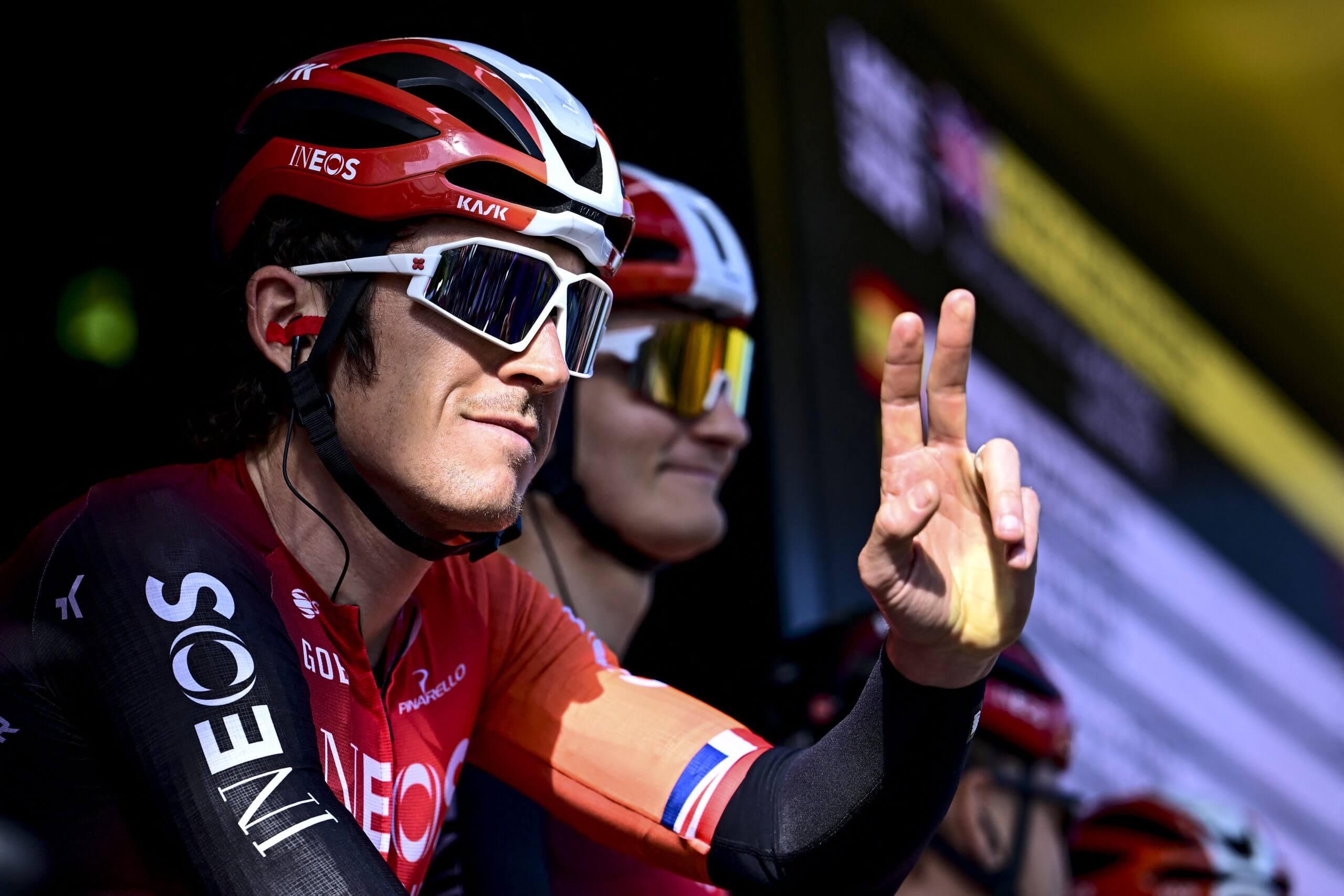
The peloton will be a very different place next season, although it looked slightly different on Sunday already. The Norwegian team Uno-X wore throwback jerseys in the colours of 7-Eleven, commemorating 40 years since the now-defunct American team made their debut in the Monuments. Uno-X’s current sponsor, Reitan, has links with the supermarket chain in Scandinavia.
On the road, INEOS’ attempted move through Jungels and Foss was a proactive move which highlighted the tactical bravery the British squad has shown this season, while Bahrain Victorious made a similar attempt by putting Jack Haig in the day’s breakaway.
Outside those teams, there were few signs of innovation in an attempt to win the race. Some of this is undoubtedly down to Pogacar’s strength, but many simply sat in, content to ride for a podium in a bunch sprint. While it may be each team’s most realistic chance of some form of success, this passivity is not good for cycling.
But Pogacar’s post-race comments were both instructive and damning of his competition. Right now, his command is such that he does not need a plan to win.
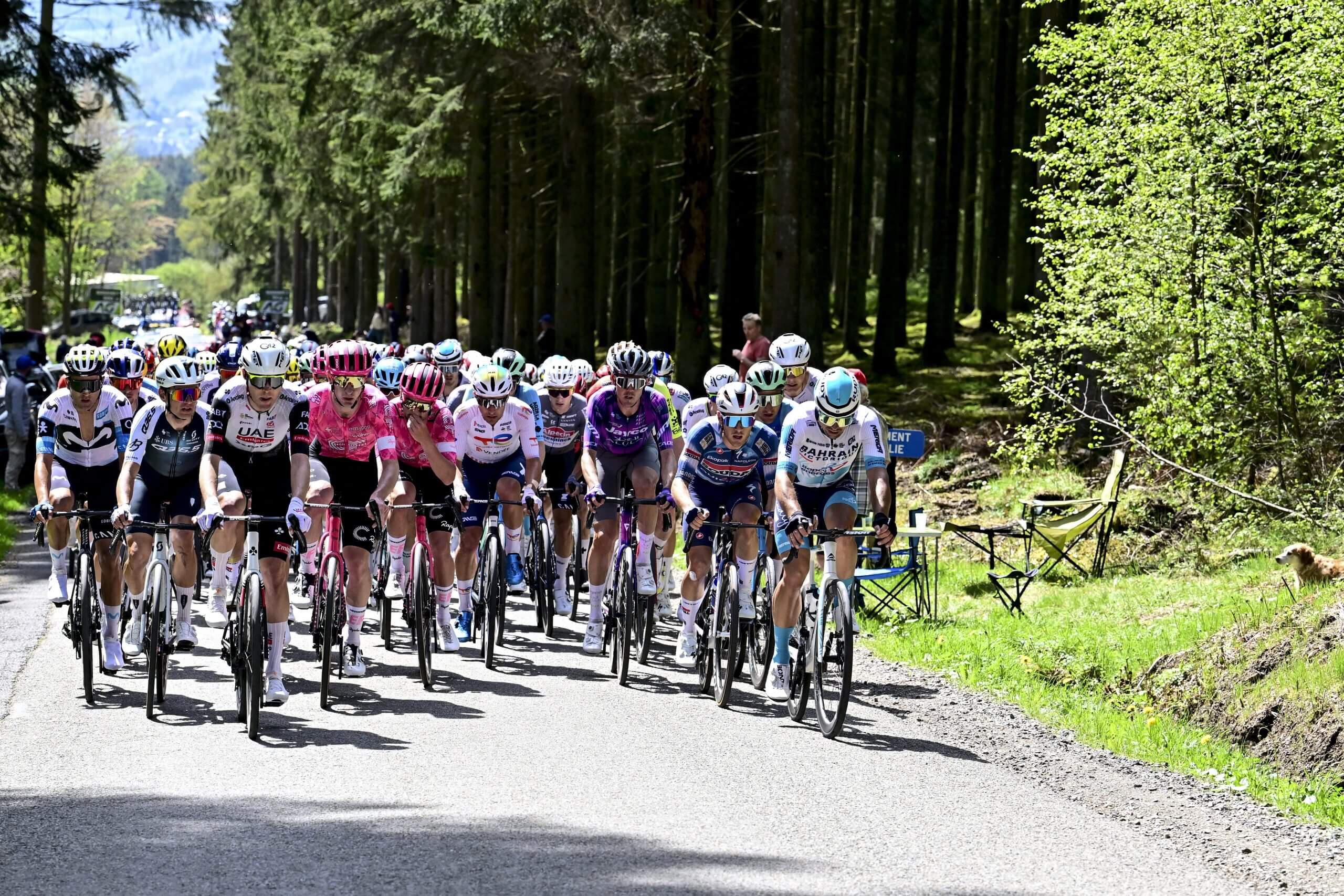
How did Liege-Bastogne-Liege Femmes unfold?
Unlike their male counterparts, the elite of the women’s peloton are each capable of taking chunks from the others on any given day.
The field whittled down to an outstanding quartet with 15km left: pre-race favourite Vollering, world champion Lotte Kopecky, Pieterse, who had won Fleche Wallonne on debut on Wednesday, and Cedrine Kerbaol, a rising French star.
Surprisingly, it was Kerbaol who broke clear, but she could not break the chasers. Vollering and Piertse began to bridge the gap — by this stage, Kopecky had been replaced by Kim Le Court, who hauled herself back into contention on the day’s final climb.
The catch was made with 8km remaining, with the lead quartet entering the barriers together. Vollering opened up the sprint, but was quickly passed by the power of her Dutch rival Pieterse, before Le Court, who had drafted Pieterse perfectly, timed her explosion perfectly to win by a bike length.

Le Court is used to bridging gaps. She thought she might never make it as a road professional, having almost quit bike racing as a 20-year-old in 2016 due to the financial repercussions of several serious injuries.
Le Court kept competing in mountain biking, but it was only last year that she made her debut as a full professional on the road, winning a stage of the Giro d’Italia in similar conditions.
At Liege-Bastogne-Liege, grit delivered the biggest win of her career.
“I have no words,” Le Court said post-race. “I tried everything I could to come back to the group. I never gave up, kept the rhythm, the confidence in myself, and saved a bit of energy for the sprint. I just went all out and did everything that I could.”
Liege-Bastogne-Liege last five winners:
2021 — Tadej Pogacar (Slovenia) / Demi Vollering (Netherlands)
2022 — Remco Evenepoel (Belgium) / Annemiek van Vleuten (Netherlands)
2023 — Remco Evenepoel (Belgium) / Demi Vollering (Netherlands)
2024 — Tadej Pogacar (Slovenia) / Grace Brown (Australia)
2025 — Tadej Pogacar (Slovenia) / Kimberley Le Court (Mauritius)
(Top photo: Maarten Straetemans/Belga/AFP via Getty Images)



